[FIX] Mac Error The Application is not Open Anymore
One of the most common issues with the Mac systems is the “The application is not open anymore” error message. This error message includes the name of the application that stops responding and thus users are not able to use the application any longer. Now, this is not really limited to a specific application. Rather it can happen to any app on your Mac but more specifically it often occurs with the common apps such as Finder, Preview, Safari, and more. The most irritating part of the error is that when you get the message, the said application does not close but rather it remains open, stuck until you force quit it or restart your system.
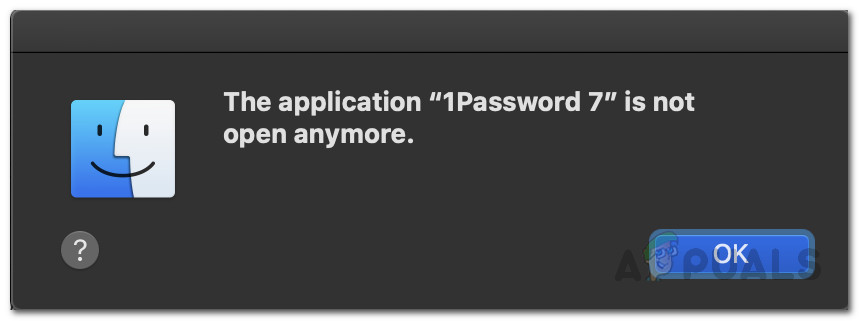
What actually happens is that your Mac thinks the named application is no longer open while the app stays open in the background. Therefore, you are unable to use it. The error message appears when the app that you are trying to use becomes unresponsive and that does not sound awful. However, in some cases, the issue seems to be persistent and you are forced to restart every single time. In such a case, the issue can be associated with an operating system bug. If this is applicable to you, you will have to make sure that your Mac is up to date.
Updates often contain fixes to different bugs and thus updating your system might get rid of the error for good. With that said, if this is the first time you have seen the error message, we will take you through the various methods that you can use to get around it. So, without further ado, let us get started.
Method 1: Force Quit the App
The first thing that you should do whenever you face the said error message is to force quit the application. Since the app becomes unresponsive, you will not be able to close as you would normally close other applications. Therefore, force quit is your only option to exit the app. Now, there are multiple ways you can force an application, we will list down a few but not all of them.
Using a Keyboard Shortcut
The first way you can force quit an application is to use a keyboard shortcut. Follow the instructions below to do this:
- First of all, hit the Command + Option + Escape keys on your keyboard together.
- This will bring up the Force Quit Applications window.
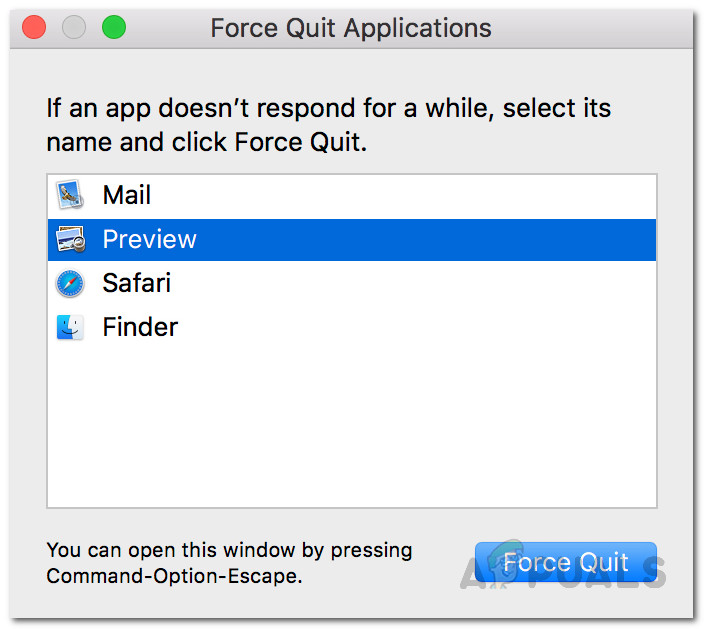
Force Quit Application - Select the application that is not responding and then click the Force Quit option at the bottom.
- This will close the app immediately.
Force Quit from the Dock
Another way of forcing an app to quit would be via the Dock. Here’s how to do this:
- On your Dock, hold the Option key and then right-click on the app that is not responding.
- This will bring up a list of options.
- From the list, choose the Force Quit option.
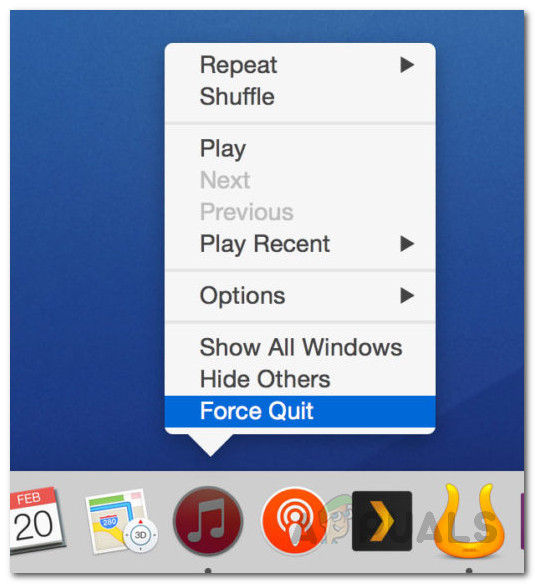
Force Quitting
Using Activity Monitor
Finally, if the above methods do not work for you, you can use the Activity Monitor to close an unresponsive app. To do this, follow the instructions below:
- First of all, open up Activity Monitor located in /Applications/Utilities directory. Alternatively, you can just search for the app in the Spotlight. To do this, press the Command + Space keys. Then, search for Activity Monitor and open it up.
- Once Activity Monitor has launched, locate the application that is not responding and then click the X icon at the top-left corner.
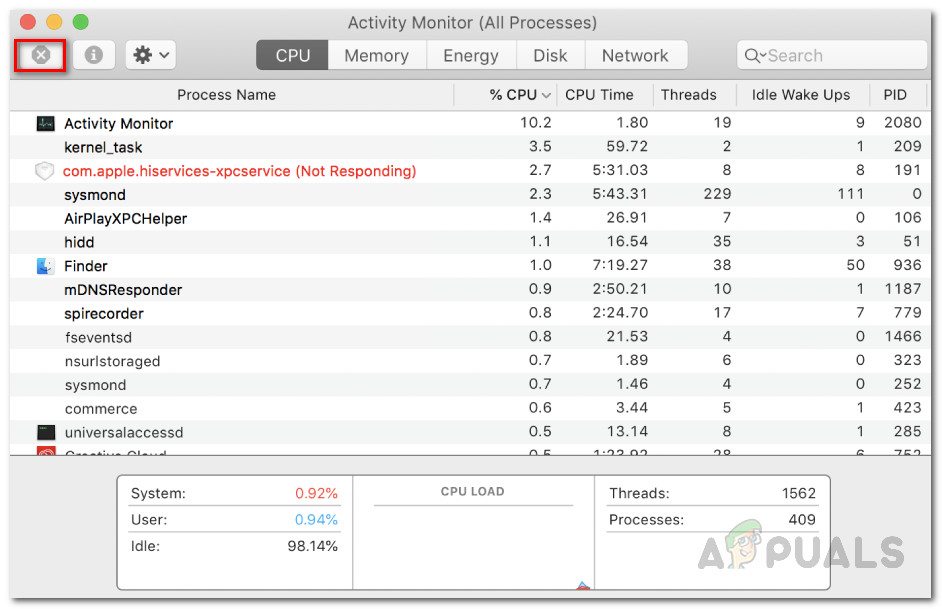
Activity Monitor - Finally, click the Force Quit button on the pop-up dialog box.
Method 2: Force Reboot your Mac
If force quitting the application does not fix the issue for you, then, you will have to force reboot your Mac to be able to use the application again. It is important to note that force rebooting will result in losing any unsaved files so make sure that you close any applications that are running beside the culprit one. The procedure is the same for all Macs, just the power button is located differently. With that said, follow the instructions below to force reboot your Mac.
- To force reboot, hold down the Power button of your Mac until the screen goes black.

Mac Power Button - Once the system has powered off, wait for a few seconds.
- After that, hit the Power button again to turn on your Mac.
- In case you are asked to open apps, just click Cancel.
Method 3: Use Safe Mode
As it turns out, you can use the safe mode to launch the application and then perform a restart to fix the issue. This has been reported by a user who was facing a similar issue. Safe Mode boots your Mac with only the required apps running in the background. To boot into safe mode, follow the instructions below:
- First of all, power off your Mac.
- Once powered off, wait for a few seconds. After that, press the Power button.

Mac Power Button - Now, while the Mac is starting, press and hold the Shift key immediately. Some Macs play a startup sound, that is when you hold the shift key.
- Then, once you see the gray Apple logo along with the progress indicator, let go of the Shift key.
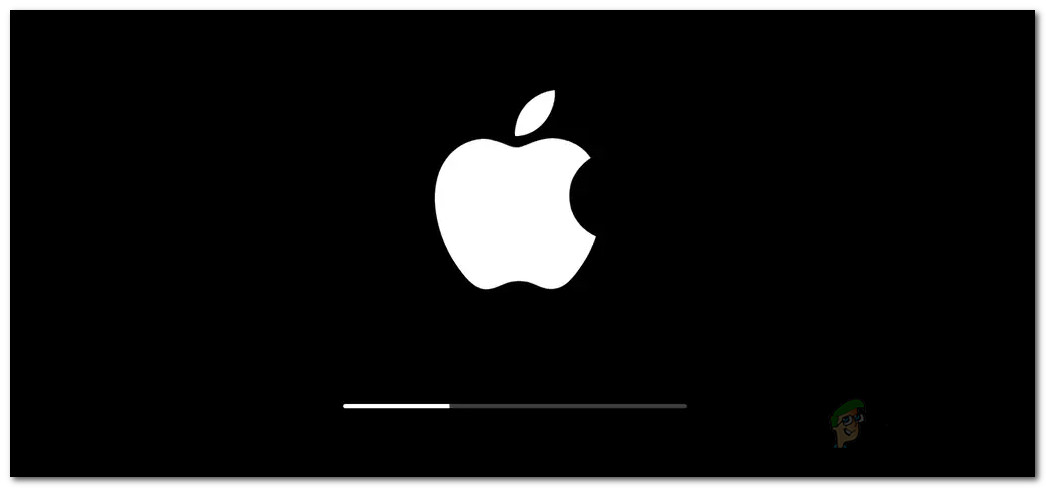
Mac Boot - If you do this correctly, your Mac should’ve started in Safe mode.
- Now, launch the application that was facing the issue. After a while, restart your Mac normally.
- See if that fixes the issue.
It is important to note that in some scenarios, such error messages can be caused by some sort of malware on your system. Therefore, make sure you scan your PC via your antivirus software in case the error keeps popping up again and again.





